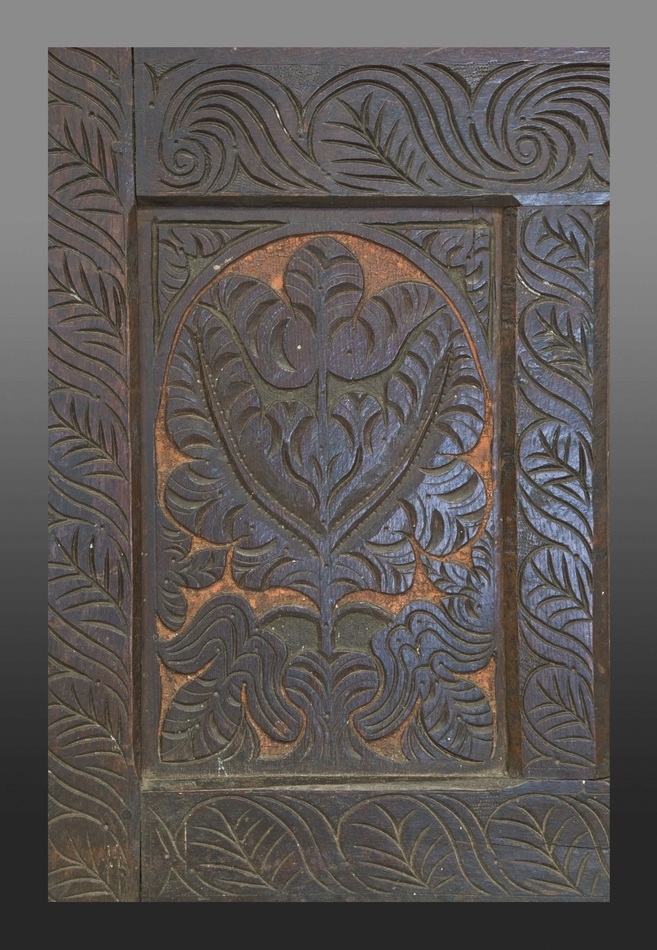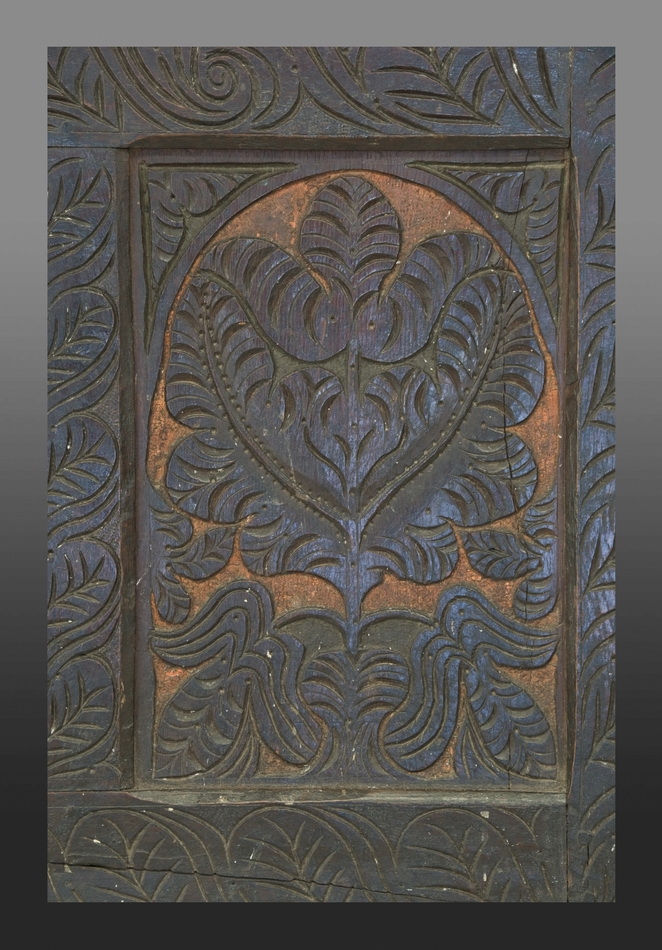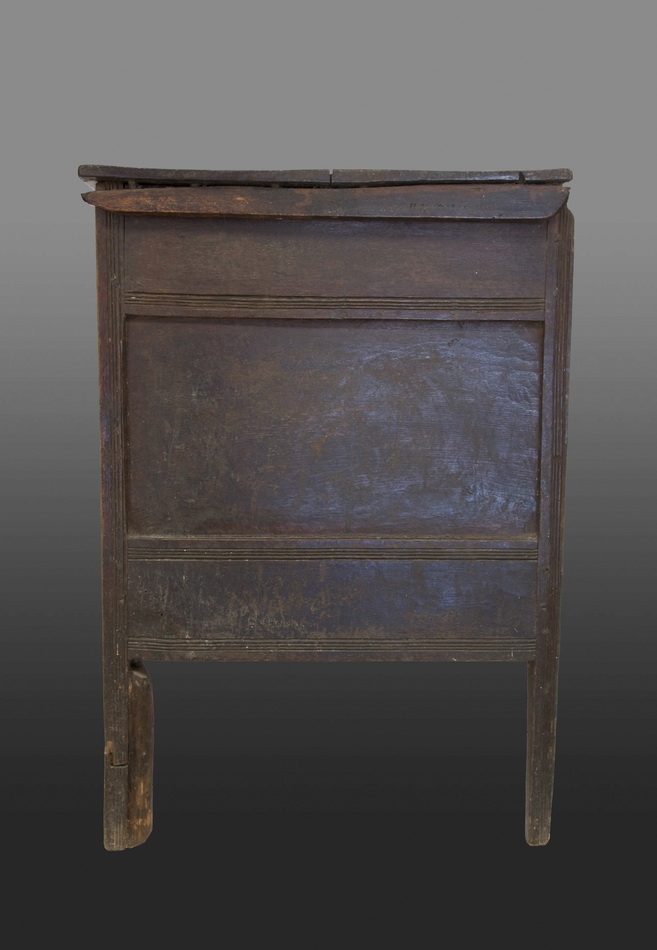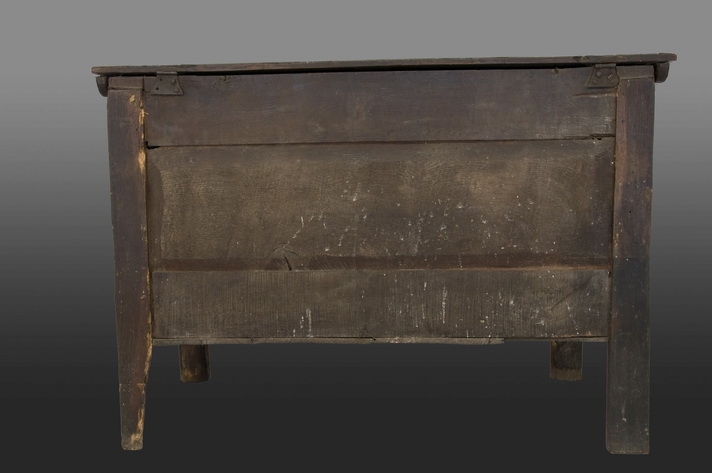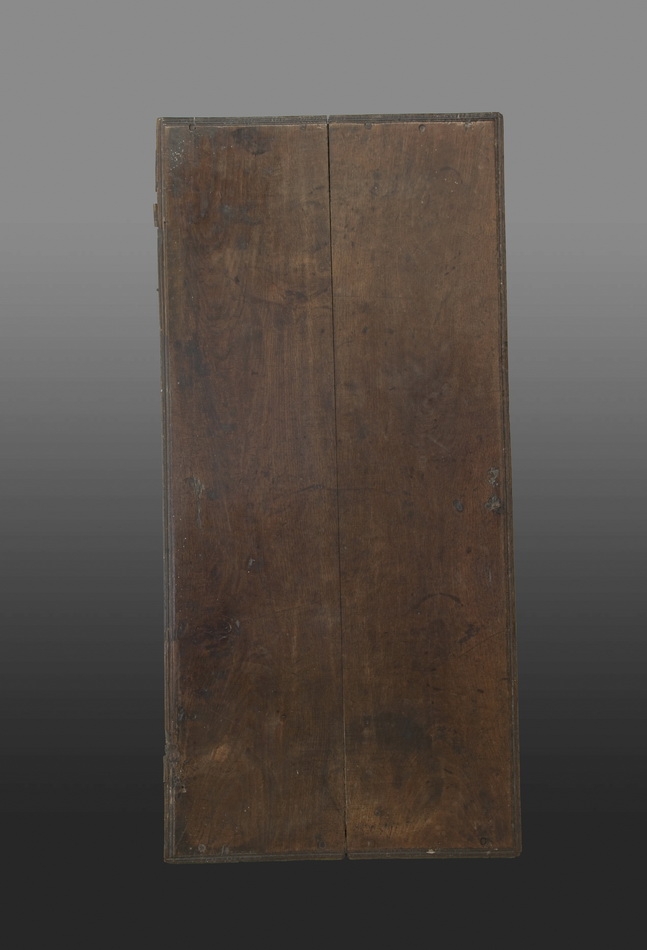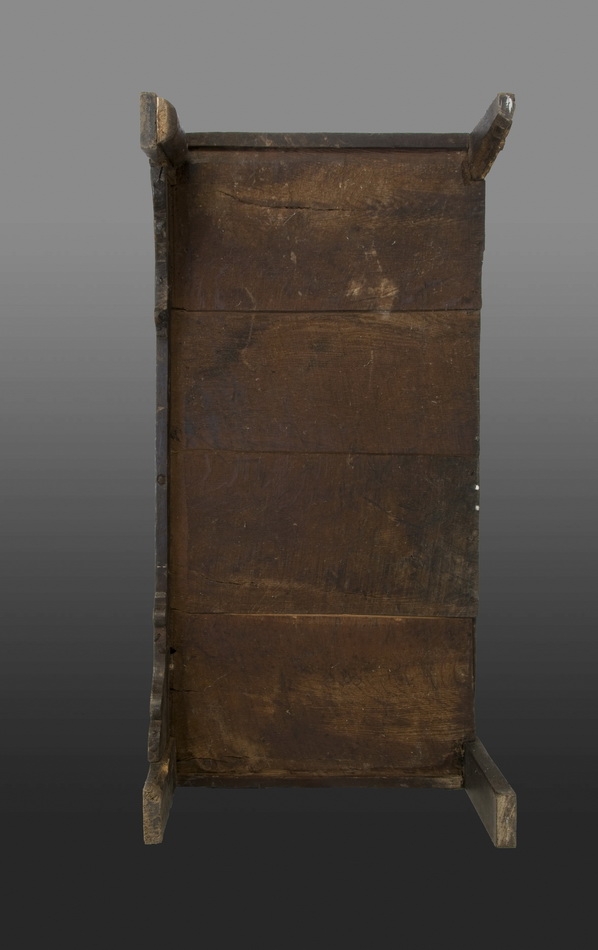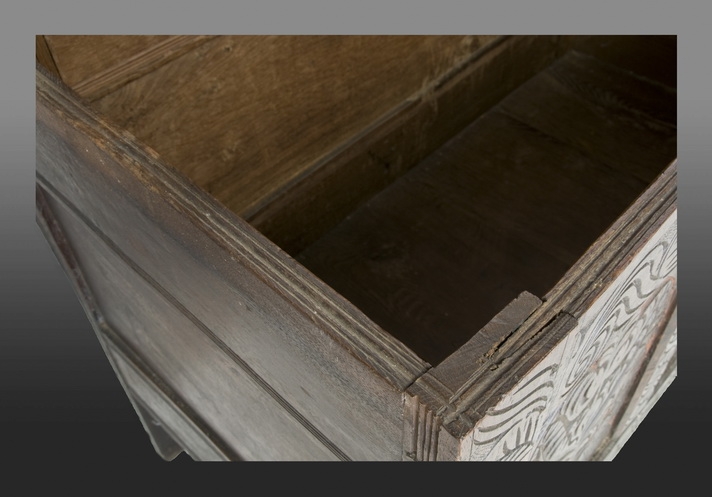Charles II East Devon chest
1672
Exeter, Devon
W 47.65" × H 33" × D 22.5"
Stock # Ex10
SOLD
This elaborately polychromed chest a product of the third later seventeenth-century Exeter joiners workshop features front panels carved with Dennis-like botanical motifs and numerous other structural and ornamental traits comparable to the documented practices of the Dennis Shop in New England. Its similarity to a chest constructed by Thomas Dennis for prosperous Ipswich, Massachusetts residents John and Margaret Staniford (Winterthur Museum) and the fact that it is dated (1672), four years earlier than the Staniford chest, make it a useful tool for examining the interconnection between the practices of Dennis and his Exeter-based counterparts. No other known object so completely represents the use of polychromy by Exeter joiners. This feature, more than any other, distinguishes the Dennis Shop and Exeter joiners workshops from later seventeenth-century joined case furniture produced by other New England and English artisans. The practice involved the application of paint in shades of red, green, and white to the dropped ground surrounding relief carving. As on this chest, this is most often seen on the front panels, but may also be used on the front faces of framing members. Polychomy employed in this manner was by no means an uncommon decorative strategy among seventeenth-century English and New England joiners. However, the high survival rate of Exeter joined chests and boarded boxes with original polychomy indicate that this form of decoration was used by joiners and appreciated by their clients to a greater degree than in other English urban communities. Relief carving and polychromy on the front front central panel directly parallels use of the same techniques on the Staniford chest. The characteristic Dennis composition which comprises the central element of the carving consists of a seedpod-like flowerhead supported by a central stem from which sprout two broad, incurved asymmetric leaves which meet directly above the flowerhead. On both the 1672 dated Exeter chest and the 1676 dated Staniford chest, the botanical composition of the central panel is framed above by a simple semicircular arch ornamented with a line of punch-work. On the 1672 chest and a different chest constructed by Thomas Dennis that descended in his family (Essex Institute), the corners above the arch are occupied by distinctive trefoil shaped spandrels, virtually identical on both the English and New England objects. Red and green pigments of approximately the same shades are applied to the dropped ground around the carving on the English 1672 and New England 1676 chests. The distribution of these colors is also the same: red concentrated at the centre of the seed-pod and lower foliage and at the upper corners, while green appears in greater quantity on either side of the central stem. This arrangement is reversed on the side front panels of both chests. The relatively simple incised carving of schematised running leaf and stem motif carved on the faces of the front stiles, front bottom rail, and front muntins of the 1672 chest represent another element of carving design that made the crossing to New England almost unchanged. A Dennis shop joined chest (Essex Institute) dated twenty years later (1692) is carved with exactly the same pattern in the same places. On both chests, the leaves are oriented in the same direction proper-left to proper-right on the bottom rail and up and facing outward on the stiles and muntins.
As with the joined chests produced by the first later seventeenth-century Exeter workshop, the artisan responsible for the 1672 chest made extensive use of the V-V-ogee moulding, applying on the side rails, the side profiles of the stiles, the top profiles of all framing members (a usage not known in New England), and on the inner surfaces of the rear framing members. The cleats too are of the standard Dennis/Exeter tapered form attached with heavy pins which fully penetrate the cleat and lid. The 1672 chest also serves to introduce yet another design element employed by later seventeenth-century Exeter joiners and the Dennis Shop applied spandrels. While measurements vary, the profiles of these decorative extensions are always the same on both Exeter and Dennis shop joined chests. Despite the high quality of the carving, the reddish local oak employed in the 1672 chest is shockingly scant, reflecting the severe depletion of Exeter's timber resources during the seventeenth century. The front top rail is so thin that its attachment to the stiles is accomplished with a shouldered tenon of dubious structural merit.
Condition Notes
Original polychromy. Old losses and repairs to lower portions of three stiles.

